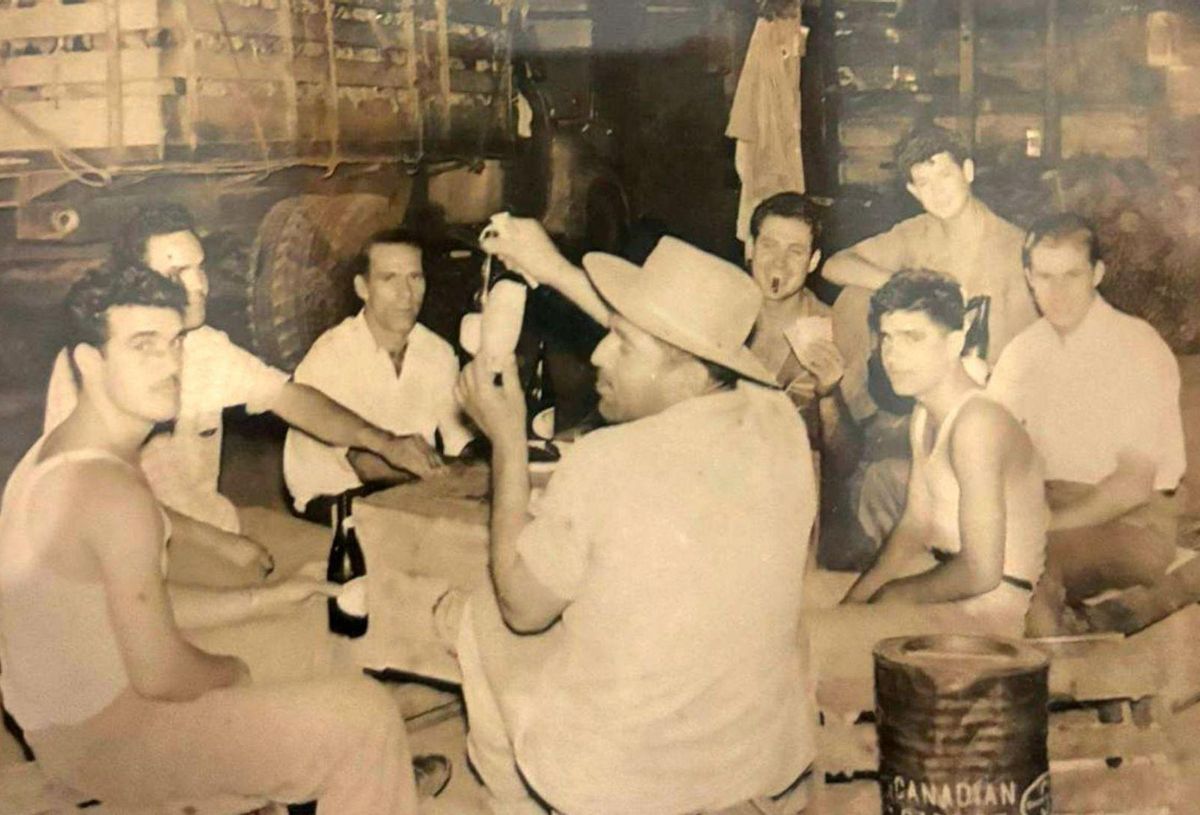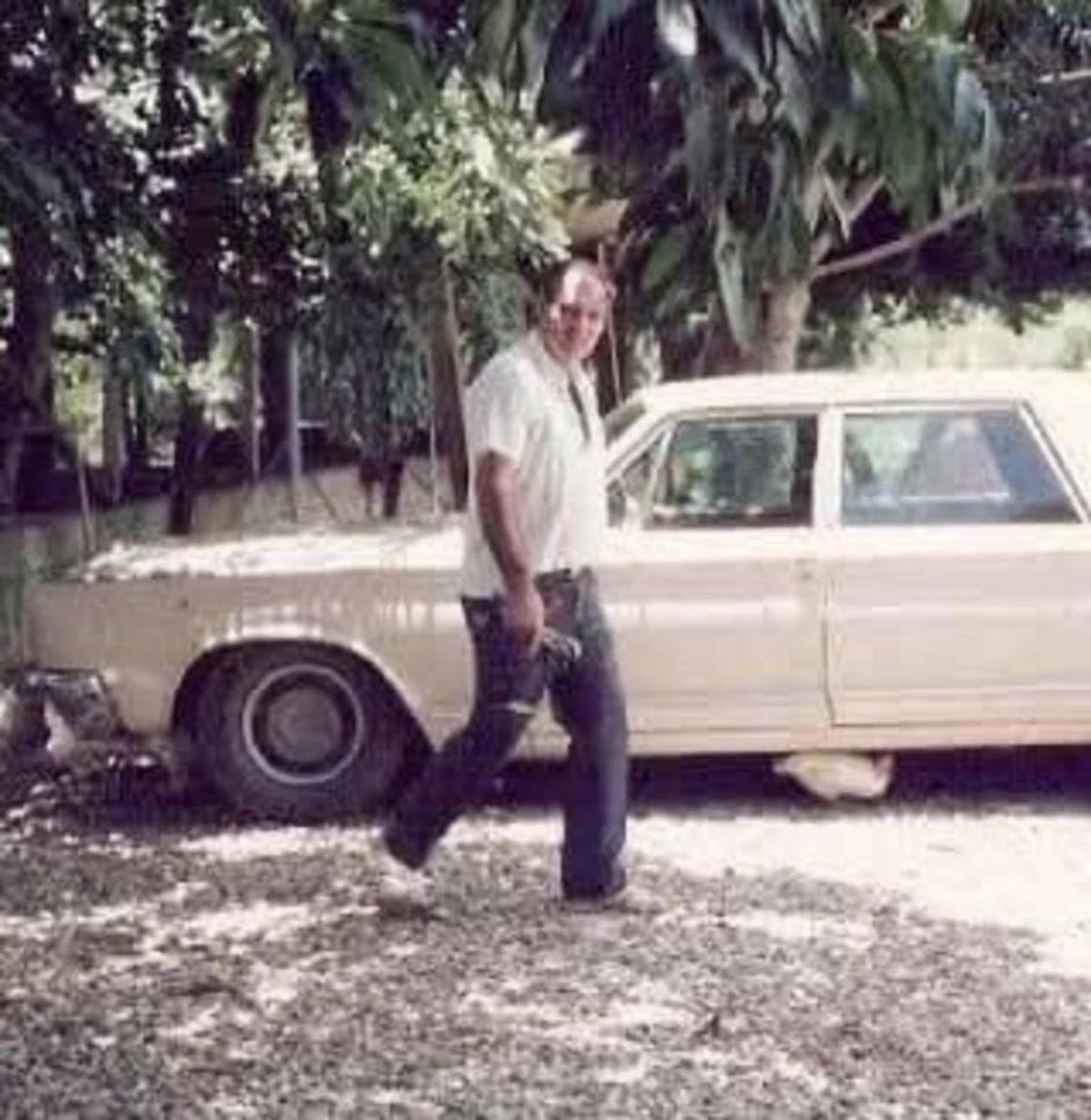
From left to right: Froilán Luis Rodríguez, Rosi Afonso, Carmen Rosa Mansito, Lupe Afonso and his brother Cheo. / Ed
In October of last year, the President of the National Government, Pedro Sánchez, mentioned in Congress a report published in a Venezuelan newspaper on May 25, 1949. He recalled that one day we were the Canarians who left irregularly in search of a better future, similar to those suffering today amidst the thousands arriving at our shores almost daily.
The article in the Commercial Agency stated: “An unsteady sailboat reached our shores with 106 illegal immigrants on board. The refugees, including ten women and a four-year-old girl, were in dire conditions: famished. The ship’s hold, measuring just 19 metres in length, resembled a cesspit and emitted an unbearable stench.” The text was accompanied by an image of the Elvira ship, which took 36 days to traverse the Atlantic Ocean.
This was merely a small fraction of thousands of Canarians who had to abandon their land and families in search of a better life. Interestingly, many of their descendants today are those fleeing the severe political, economic, and social turmoil faced by the Venezuelan people.
Venezuela boasts the highest number of island emigrants, around 600,000, comprising Canarians and their descendants. This migration began in 1678, with many settling first in Caracas and La Guaira, where a significant colony formed. In 1831, the President of the Republic of Venezuela, José Antonio Páez, whose forebears were from northern Tenerife, facilitated the arrival of over 20,000 Canarians through a decree promoting immigration from the Canary Islands to work in agriculture. Later, from 1948, illegal emigration surged, as evidenced by the events surrounding the Elvira a year later. This incident garnered substantial media attention, and along with the illegal influx during those years, prompted dictator Pérez Jiménez to negotiate with Franco in 1950 to ease migration procedures with Venezuela, benefiting around 60,000 arrivals until 1958. Subsequently, in the 1970s, emigration primarily stemmed from the unification of numerous families fracturing over the years.
The Reverse Effect
Starting from the 1980s, a reverse effect was observed. During these years, many Canarians began returning due to the Venezuelan economic crisis triggered by the country’s debt following the 70s oil boom. The decline in crude oil prices initiated a gradual economic downturn that resulted in currency devaluation in 1983.
It is important to remember that Venezuela in the 1950s was a thriving nation, with the economic surge generating a demand for labour in construction, agriculture, and services. Policies were enacted to attract immigrants as part of the so-called National Population and Labour Plan. Within this context, the Canary Islands and Venezuela shared historical and cultural bonds from prior migrations, significantly easing integration. Conversely, the Canary Islands faced economic hardships marked by soaring unemployment and poverty rates. The geographical distance of the archipelago from the rest of Spain exacerbated this situation. In terms of agriculture—its principal economic activity—it was also struggling due to inadequate modernisation and low pricing of produce such as bananas and tomatoes in European markets. With population growth exceeding the economic capacity to create employment, options were scant, compelling many to seek opportunities that the Canary Islands could not provide.

Moments from the lives of Canarians in Venezuela. / Ed
One notable area in the north of Tenerife that experienced significant emigration during the 1950s and 60s was the municipality of Icod de los Vinos. Many of the homes and urban landscapes that constitute the town’s core today were built with the earnings of those who once embarked on a quest for opportunity and found it.
These faces bear names and stories, remembering the hardships they endured in an environment entirely different from the one they had left behind. They faced challenging moments, yet clung to the hope of prospering and gathering the money required to return to their homeland and reunite with loved ones. Packed in their luggage was an overwhelming uncertainty towards the unknown.
In this spontaneous gathering, Lupe Afonso de León and his brother Cheo, Froilán Luis Rodríguez, his wife Rosi Afonso, and Carmen Rosa Mansito recount their experiences with the clarity and composure afforded by time, yet also with a touch of anxiety and despair regarding the predicament of this beloved adoptive land where many of their relatives still reside.
They reminisce about how, in the beginning, men often left, many at young ages, to avoid fulfilling military service. Others, older, departed with the intention of returning, but in many instances, they never returned, leaving behind widows and children who scarcely knew them. “There was a substantial demand in the agricultural sector, and in northern Tenerife, the people were adept at it. There is no doubt that the growth seen in that country’s agriculture during those years was largely attributable to the contributions of Canarians.”
They mention that numerous individuals from Icod left from Playa de la Arena in Santiago del Teide, where they ventured offshore in small boats that transferred them to larger vessels usually docking at smaller Venezuelan ports like Valencia. These emigrants had connections with other Canarians who were already established. Initially, they faced considerable hardship, residing in what they termed rancherías, basic lodgings with poor sanitary conditions where they primarily slept after long hours of work.
As time passed and they gained financial stability, most returned to Icod twice a year, in June and December, or until “the papers expired,” as they would put it, when their funds were depleted. They brought back lavish cars, colloquially known as Haigas, and always kept in their pockets ten bolivars (one bolivar equated to 30 pesetas) to showcase to the locals how well they were faring in “the branch of heaven,” as they affectionately referred to the host country.
Froilán narrates how his father, born in 1916, was the first to depart, and by 1956, he took his elder brother with him. “Every time my father returned from Venezuela, my mother became pregnant,” Froilán reveals and continues: “He had to support five children on his own as a seamstress because he never sent money back. When my brother started working in a mechanical workshop in Caracas, we began to receive some income. I recall that we didn’t buy anything until the money from Venezuela came in. The next to leave was my sister Mercedes, who married another emigrant, a practice quite common at that time. By 1961, we had successfully unified Family regrouping, leading the rest of the family to relocate there. I was 13 then, leaving behind the dimly lit San Antonio neighbourhood in Icod, and arriving in Caracas was a significant transformation.”
He had the pathway constructed as the family had sufficient resources to live comfortably. Upon my arrival, I indulged in sirloin steak. During one of those holidays on the island, he met his wife, Rosi Afonso, and they married in 1976. For her, having lived in Santa Cruz, adapting to a new life in such a contrasting environment from the capital was challenging. The couple returned to the island in 1982 with their two daughters.

One of the vehicles that transported the emigrants. / Ed
Lupe Afonso de León recalls how his father, who traded fruit in Caracas, sent remittances for his wife and the seven children he had left behind. Gradually, the siblings departed as they reached the age of 17 to avoid conscription. “I arrived in Caracas at the age of eleven and remained there for five years until we returned. The one who truly experienced that time was one of my sisters, who had many aspirations and observed that the cultural life in Tenerife, specifically in La Laguna during the early sixties, markedly differed from that of Caracas.”
The Struggles of the Early Years
Carmen Rosa Mansito remembers the challenges she faced during her early years in Venezuela. Her father seldom visited and saw her for the first time when she was already two years old. In 1964, upon turning six, her father decided to unite the family, moving initially to Petares and later to Puerto de la Cruz in the eastern region of the nation. Although Icod lacked electricity, the conditions were not much improved until, fortunately, the situation began to change. It was there that her four brothers were born, and she eventually met her husband, with whom she returned in 1989.
The Canarians brought their culture and traditions to Venezuela and primarily interacted with one another. They mainly focused on labouring to escape those rancherías, gathering the necessary bolivars to enhance their families’ lives, and, in many cases, to enable them to work toward a new future. During holiday periods, those with sufficient resources often returned to seek a partner because “they wanted to marry local women.” They carried their culture, customs, and notably, their cuisine. Over time, they have preserved their traditions, such as festivals, music, and traditional dances, which have blended with the Venezuelan culture. One of the most notable aspects of this community has been the establishment of associations and Canarian homes, where cultural activities and traditional festivities of the Canary Islands are promoted and celebrated. These venues have been crucial in maintaining Canarian identity within the country and fostering community among its members.
From the 80s onward, and particularly in recent years with the resurgence of policies in that country, the connection has become reciprocal, and it is increasingly common in the Canary Islands to encounter places offering Venezuelan cuisine and customs. A two-way relationship between two regions separated by the ocean yet united by historical ties of kinship.















